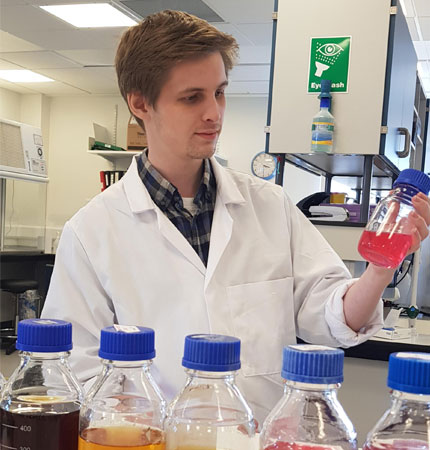Green Shoots from Blue Growth - Creating Blue/Green Circularity
The UK shellfish and aquaculture industry generates huge volumes of waste. The UK/European seaweed aquaculture sector is in its infancy but is poised for rapid expansion, bringing food, fertiliser, and biomass opportunities, but also waste. Both can pollute coastal ecosystems or generate landfill wastes – causing detrimental environmental effects and greenhouse gas emissions. However, such waste has enormous potential as a relatively untapped ‘resource’. What if we could take such waste – extract added-value - and create new fertiliser products?
The fertiliser sector is facing a cliff-edge – global terrestrial rock phosphate mines are expected to be depleted within the next 50-100 years. Phosphorus is an essential nutrient for agriculture and key fertiliser ingredient. If we can’t find ways to ‘keep’ the phosphate from running off land, entering our rivers and ultimately being lost to sea, global intensive crop production could reach a dangerous tipping point. There is significant scope to find new ways to close the phosphate cycle and create sustainable circular processes.
We will investigate how marine ‘wastes’ can be successfully repurposed to add-value and create new fertilisers. We will add-value to aquaculture waste streams, including fishery-produced shellfish and seaweed, whilst concomitantly developing more sustainable practices in aquaculture/agricultural sectors, by:
- Reducing aquaculture waste through repurposing and creating added-value.
- Process shellfish by-products for use in nutrient recovery from wastewater.
- Cultivate seaweed and investigate extraction of high-value compounds.
- Assess final products generated by (2&3) as alternatives to commercial fertilisers.
- Engage with stakeholders and measure impact

Work packages
WP1 'Agricultural testing with previously generated soil amendment material' (SRUC)
ERI’s Phos4You (EU funded) project demonstrated the capacity for granulated crab shell waste to treat wastewater and accumulate phosphate. This WP is a natural follow-on and explores the feasibility of using this material as a novel, naturally produced, slow-release phosphate-enriched fertiliser product through two growing seasons of pot and leachate agronomy trials conducted at lab-scale and in a greenhouse.
WP2 'Generation, characterisation, and application of shellfish/crustacean by-products' (ERI)
To build resilience and further reduce waste, this WP seeks out new alternative by-products from the aquaculture industry. It will: (a) Identify and acquire alternative shellfish/fishery by-products and convert these into granular materials; (b) Investigate their wastewater treatment and phosphate accumulation potential; (c) Characterise these materials to quantify how (physically-chemically) they vary and adsorb phosphate (and other beneficial nutrients).
WP3 'Seaweed cultivation, characterisation, and extraction of high-value product(s)' (SAMS)
Running alongside WP2, this WP will select a species of seaweed for the removal of nutrients from water and have suitability for end-use application as a fertiliser. It will: (a) cultivate a seaweed species in conditions representative of aquaculture effluents; (b) harvest and process cultivated algal biomass; and (c) biochemically characterise cultivated material and investigate the extraction of high-value product(s) (e.g., pigments, polysaccharides) that the algae may produce.
WP4 'Agricultural testing with newly developed shellfish/crustacean and seaweed materials' (SRUC / ERI)
Utilising lab-scale incubation methods and results from WP1, WP4 will exclusively incubate the new materials produced in WPs 2&3 to determine reactivity and transformation of new materials in the soil environment on a lab-scale and assess soil amendment properties of the different material(s) across one season.
WP5 'Management, communication and impact' (SAMS, all)
WP5 includes quarterly meetings between partners to monitor and track progress. It will evidence and measure impact, including identification/engagement with stakeholders via interviews/questionnaires, with follow-on engagement at the project mid- and end-points. Additionally, a “cradle-to-gate” Life Cycle Assessment will highlight areas for future improvement. Communication will include: social media; webpage; blended delivery of a seminar; conference/networking presentations; and peer-reviewed scientific publications.
This project has been made possible with thanks to the Co-op Group and the Co-op Foundation's £3.5m Carbon Innovation Fund.






